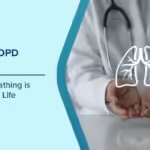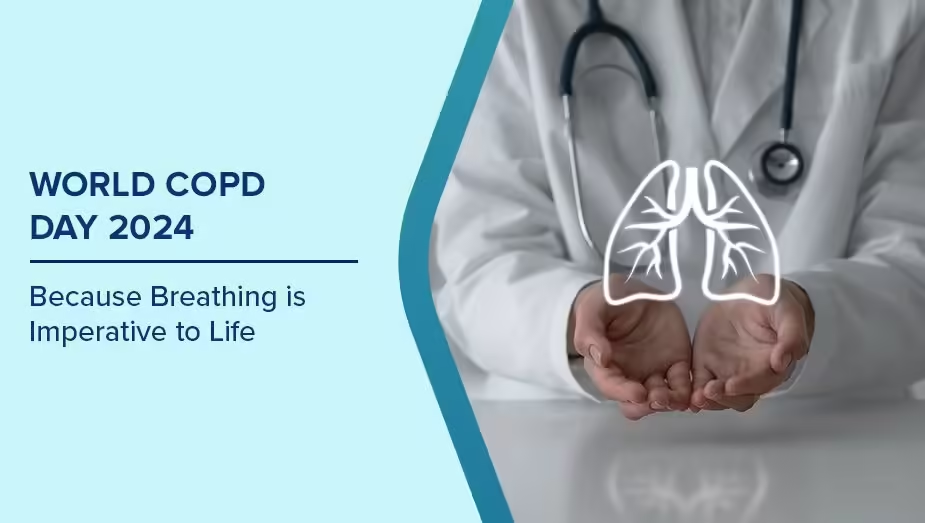You know exercise is good for you, but do you know how good? From boosting your mood to improving your sex life, find out how exercise can improve your life.
Want to feel better, have more energy and even add years to your life? Just exercise.
The health benefits of regular exercise and physical activity are hard to ignore. Everyone benefits from exercise, no matter their age, sex or physical ability.
Need more convincing to get moving? Check out these seven ways that exercise can lead to a happier, healthier you.
1. Exercise controls weight
Exercise can help prevent excess weight gain or help you keep off lost weight. When you take part in physical activity, you burn calories. The more intense the activity, the more calories you burn.
Regular trips to the gym are great, but don’t worry if you can’t find a large chunk of time to exercise every day. Any amount of activity is better than none. To gain the benefits of exercise, just get more active throughout your day. For example, take the stairs instead of the elevator or rev up your household chores. Consistency is key.
2. Exercise combats health conditions and diseases
Worried about heart disease? Hoping to prevent high blood pressure? No matter what your current weight is, being active boosts high-density lipoprotein (HDL) cholesterol, the “good” cholesterol, and it decreases unhealthy triglycerides. This one-two punch keeps your blood flowing smoothly, which lowers your risk of heart and blood vessel, called cardiovascular, diseases.
Regular exercise helps prevent or manage many health problems and concerns, including:
- Stroke.
- Metabolic syndrome.
- High blood pressure.
- Type 2 diabetes.
- Depression.
- Anxiety.
- Many types of cancer.
- Arthritis.
- Falls.
It also can help improve cognitive function and helps lower the risk of death from all causes.
3. Exercise improves mood
Need an emotional lift? Or need to lower stress after a stressful day? A gym session or brisk walk can help. Physical activity stimulates many brain chemicals that may leave you feeling happier, more relaxed and less anxious.
You also may feel better about your appearance and yourself when you exercise regularly, which can boost your confidence and improve your self-esteem.
4. Exercise boosts energy
Winded by grocery shopping or household chores? Regular physical activity can improve your muscle strength and boost your endurance.
Exercise sends oxygen and nutrients to your tissues and helps your cardiovascular system work more efficiently. And when your heart and lung health improve, you have more energy to tackle daily chores.
5. Exercise promotes better sleep
Struggling to snooze? Regular physical activity can help you fall asleep faster, get better sleep and deepen your sleep. Just don’t exercise too close to bedtime, or you may be too energized to go to sleep.
6. Exercise puts the spark back into your sex life
Do you feel too tired or too out of shape to enjoy physical intimacy? Regular physical activity can improve energy levels and give you more confidence about your physical appearance, which may boost your sex life.
But there’s even more to it than that. Regular physical activity may enhance arousal for women. And men who exercise regularly are less likely to have problems with erectile dysfunction than are men who don’t exercise.
7. Exercise can be fun — and social!
Exercise and physical activity can be fun. They give you a chance to unwind, enjoy the outdoors or simply do activities that make you happy. Physical activity also can help you connect with family or friends in a fun social setting.
So take a dance class, hit the hiking trails or join a soccer team. Find a physical activity you enjoy, and just do it. Bored? Try something new, or do something with friends or family.
Exercise to feel better and have fun
Exercise and physical activity are great ways to feel better, boost your health and have fun. For most healthy adults, the U.S. Department of Health and Human Services recommends these exercise guidelines:
- Aerobic activity. Get at least 150 minutes of moderate aerobic activity. Or get at least 75 minutes of vigorous aerobic activity a week. You also can get an equal combination of moderate and vigorous activity. Aim to spread out this exercise over a few days or more in a week.For even more health benefits, the guidelines suggest getting 300 minutes a week or more of moderate aerobic activity. Exercising this much may help with weight loss or keeping off lost weight. But even small amounts of physical activity can be helpful. Being active for short periods of time during the day can add up and have health benefits.
- Strength training. Do strength training exercises for all major muscle groups at least two times a week. One set of each exercise is enough for health and fitness benefits. Use a weight or resistance level heavy enough to tire your muscles after about 12 to 15 repetitions.
Moderate aerobic exercise includes activities such as brisk walking, biking, swimming and mowing the lawn.
Vigorous aerobic exercise includes activities such as running, swimming laps, heavy yardwork and aerobic dancing.
You can do strength training by using weight machines or free weights, your own body weight, heavy bags, or resistance bands. You also can use resistance paddles in the water or do activities such as rock climbing.
If you want to lose weight, keep off lost weight or meet specific fitness goals, you may need to exercise more.
Remember to check with a health care professional before starting a new exercise program, especially if you have any concerns about your fitness or haven’t exercised for a long time. Also check with a health care professional if you have chronic health problems, such as heart disease, diabetes or arthritis.
Products and Services
- A Book: The Mayo Clinic Diet Bundle
- A Book: Live Younger Longer
- Mayo Clinic Sports Medicine
- Available Health Products from Mayo Clinic Store
- Available Solutions under FSA/HSA Coverage from Mayo Clinic Store
- Newsletter: Mayo Clinic Health Letter — Digital Edition
- A Book: Mayo Clinic Guide to Home Remedies
- A Book: Mayo Clinic on High Blood Pressure
- A Book: Mayo Clinic Family Health Book
- The Mayo Clinic Diet Online
See also
- Balance exercises
- Blood Doping
- Can I exercise if I have atopic dermatitis?
- Core exercises
- Exercise and chronic disease
- Exercise and illness
- Stress relief
Regular exercise has been shown to help boost energy levels and enhance your mood. It may also be associated with many other health benefits, including a reduced risk of chronic disease.
Exercise is defined as any movement that makes your muscles work and requires your body to burn calories.
There are many types of physical activity, including swimming, running, and walking, to name a few.
Being active has been shown to have many health benefits, both physically and mentally. It may even help you live longerTrusted Source.
Here are the top 10 ways regular exercise benefits your body and brain.

1. Exercise can make you feel happier
Exercise has been shown to improve your mood and decrease feelings of depression, anxiety, and stress.
The authors of a 2019 review found that 10–30 minutesTrusted Source of exercise is enough to improve your mood.
Exercise may increase brain sensitivityTrusted Source to serotonin and norepinephrine. These hormones relieve feelings of depression. It may also increase the production of endorphins, which help produce positive feelings and reduce the perception of pain.
Stopping to exercise may also affect your mood. A 2017 reviewTrusted Source found that active people who stopped exercising regularly experienced significant increases in symptoms of depression and anxiety, even after only a few weeks.
2. Exercise can help with weight management
Inactivity may play a major factorTrusted Source in weight gain and obesity, which may lead to health complications. Exercise can help you manage your weight by helping with energy expenditure, also known as spending.
Your body spends energy in three ways:
- digesting food
- exercising
- maintaining body functions, like your heartbeat and breathing
A reduced calorie intake may lower your metabolic rate, which can temporarily delay weight loss. However, regular exercise may increaseTrusted Source your metabolic rate. This can burn more calories and help you manage your weight.
Combining aerobic exercise with resistance training may also maximize fat lossTrusted Source and muscle mass maintenance. This could help you manage weight, maintain lean muscle, and reduce your risk of cardiovascular disease.
3. Exercise is good for your muscles and bones
Exercise plays a vital role in building and maintaining strong muscles and bones.
As people age, they tend to lose muscle mass, strength, and function. This leads to an increased risk of injury. Practicing regular physical activity is essential to reducing muscle loss and maintaining strength as you age.
Exercise also helps build bone density. The authors of a 2022 reviewTrusted Source found that regular exercise significantly improved bone density in the lumbar spine, neck, and hip bones. This may help prevent osteoporosis later in life.
Impact exercises like gymnastics, running, or soccer may help promoteTrusted Source higher bone density than no-impact sports like swimming and cycling.
4. Exercise can increase your energy levels
Exercise can help boost your energy levelsTrusted Source while helping to reduce fatigue. This may help as a treatment methodTrusted Source if you have certain health conditions, such as cancer.
Aerobic exercise boosts your cardiovascular system and improves lung health, which may help with energy levels.
Your heart pumps more blood as you move, delivering more oxygen to your working muscles. With regular exercise, your heart becomes more efficientTrusted Source at moving oxygen into your blood.
Over time, exercise results in less demand on your lungs. This is one of the reasons why you may find yourself getting less and less out of breath during exercise, according to the American Lung Association.
5. Exercise can reduce your risk of chronic disease
Regular physical activity is a key factorTrusted Source in reducing your risk of chronic diseases, such as:
- type 2 diabetes
- heart diseaseTrusted Source
- cancerTrusted Source, such as breast, colorectal, lung, and liver cancer, among other types
- high LDL cholesterolTrusted Source
- hypertensionTrusted Source
6. Exercise can help skin health
Your skin can be affected by the amount of oxidative stress in your body.
Oxidative stress occurs when your body’s antioxidant defenses cannot completely repair the cell damage caused by compounds known as free radicals. This can damage the structure of the cells and negatively impact your skin.
Intense and exhaustive physical activity may contribute to oxidative damage. However, a 2018 reviewTrusted Source suggests that regular moderate exercise may actually help alleviate the stress caused by free radicals.
The authors of a 2021 review concluded that regular exercise may help delay the appearance of skin aging, prevent psoriasis, and improve venous leg ulcers.
7. Exercise can help your brain health and memory
Exercise can improve brain function and protect your memory and thinking skills.
To begin with, exercise increases your heart rate. This promotes the flow of blood and oxygen to your brain. It can also stimulate the production of hormones that enhance the growth of brain cells.
For example, exercise has been shownTrusted Source to cause the hippocampus to grow in size, which may help improve mental function. This is part of the brain that’s vital for memory and learning.
Regular physical activity is important in older adults because it can help slow downTrusted Source the physiological effects of aging in your brain. It may also help reduce changesTrusted Source in the brain that can contribute to conditions like Alzheimer’s disease and dementia.
8. Exercise can help with relaxation and sleep quality
Regular exercise can help youTrusted Source relax and sleep better.
It may help improve your sleep quality because the energy loss that occurs during exercise stimulates restorative processesTrusted Source during sleep.
Also, the increase in your body temperature during exercise may help it dropTrusted Source during sleep, which could promote better sleep.
A 2018 studyTrusted Source conducted over 4 months in people with chronic insomnia found that both stretching and resistance exercise helped improve sleep quality and duration while decreasing the amount of time it takes to fall asleep.
9. Exercise can reduce pain
Chronic pain can be debilitating. For many years, the recommendation for treating chronic pain was rest and inactivity.
However, the authors of a 2021 reviewTrusted Source suggest that aerobic exercise may serve as a natural treatment option to provide pain relief and improve quality of life.
One way that exercise may help prevent or reduce chronic pain is because it increases your pain toleranceTrusted Source over time.
Exercise may also help you control painTrusted Source associated with various health conditions, including:
- chronic low back pain
- fibromyalgia
- chronic soft tissue shoulder disorder
10. Exercise can promote a better sex life
Regular exercise may help improve your sex lifeTrusted Source.
For example, engaging in regular exercise can strengthen your heart, improve blood circulation, tone muscles, and enhance flexibility, all of which may help improve your sex lifeTrusted Source.
A 2018 reviewTrusted Source of 10 studies found that exercising for at least 160 minutes per week over a 6-month period could help improve erectile function in males.
Another 2018 reviewTrusted Source suggests that regular exercise may help improve sexual satisfaction, arousal, and well-being in females. Regular resistance training may also help increase sex driveTrusted Source.
Frequently asked questions
Which exercise can you do every day?
It’s important to let your body recover between intense resistance and cardiovascular exercise sessions. That said, there are some less intense exercises you can do every day to help you get to 300 minutes per week. These may include walking, cycling, dancing, and skateboarding.
What exercises are good for belly fat?
According to the British Heart Foundation, you can’t target one specific area of fat to burn off. But, a consistent mixture of aerobic exercise, resistance training, and eating a well-balanced diet can help you burn fat all over your body. Some exercises include swimming, yoga, running, strength training, and rock climbing.
Takeaway
Exercise offers incredible benefits that can improve nearly every aspect of your health. Regular physical activity can increase the production of hormones that make you feel happier and help you sleep better.
The Department of Health and Human ServicesTrusted Source recommends you aim for 150–300 minutes of moderate-intensity activity or 75 minutes of vigorous physical activity throughout the week.
Moderate-intensity aerobic activity is anything that gets your heart beating faster, like walking, cycling, or swimming. Activities like running or participating in a fitness class count for vigorous intensity.
You can use weights, resistance bands, or your body weight to perform muscle-strengthening exercises.
Shoulder Exercises
- Band External Shoulder Rotation
- Band Internal Shoulder Rotation
- Band Pull-Apart
- Barbell Front Raise
- Barbell Rear Delt Row
- Barbell Upright Row
- Behind the Neck Press
- Cable Lateral Raise
- Cable Rear Delt Row
- Dumbbell Front Raise
- Dumbbell Horizontal Internal Shoulder Rotation
- Dumbbell Horizontal External Shoulder Rotation
- Dumbbell Lateral Raise
- Dumbbell Rear Delt Row
- Dumbbell Shoulder Press
- Face Pull
- Front Hold
- Lying Dumbbell External Shoulder Rotation
- Lying Dumbbell Internal Shoulder Rotation
- Machine Lateral Raise
- Machine Shoulder Press
- Monkey Row
- Overhead Press
- Plate Front Raise
- Power Jerk
- Push Press
- Reverse Cable Flyes
- Reverse Dumbbell Flyes
- Reverse Machine Fly
- Seated Dumbbell Shoulder Press
- Seated Barbell Overhead Press
- Seated Smith Machine Shoulder Press
- Snatch Grip Behind the Neck Press
- Squat Jerk
- Split Jerk
Bicep Exercises
- Barbell Curl
- Barbell Preacher Curl
- Bodyweight Curl
- Cable Curl With Bar
- Cable Curl With Rope
- Concentration Curl
- Dumbbell Curl
- Dumbbell Preacher Curl
- Hammer Curl
- Incline Dumbbell Curl
- Machine Bicep Curl
- Spider Curl
Triceps Exercises
- Barbell Standing Triceps Extension
- Barbell Lying Triceps Extension
- Bench Dip
- Close-Grip Push-Up
- Dumbbell Lying Triceps Extension
- Dumbbell Standing Triceps Extension
- Overhead Cable Triceps Extension
- Tricep Bodyweight Extension
- Tricep Pushdown With Bar
- Tricep Pushdown With Rope
Chest Exercises
- Band-Assisted Bench Press
- Bar Dip
- Bench Press
- Bench Press Against Band
- Board Press
- Cable Chest Press
- Close-Grip Bench Press
- Close-Grip Feet-Up Bench Press
- Decline Bench Press
- Decline Push-Up
- Dumbbell Chest Fly
- Dumbbell Chest Press
- Dumbbell Decline Chest Press
- Dumbbell Floor Press
- Dumbbell Pullover
- Feet-Up Bench Press
- Floor Press
- Incline Bench Press
- Incline Dumbbell Press
- Incline Push-Up
- Kettlebell Floor Press
- Kneeling Incline Push-Up
- Kneeling Push-Up
- Machine Chest Fly
- Machine Chest Press
- Pec Deck
- Pin Bench Press
- Push-Up
- Push-Up Against Wall
- Push-Ups With Feet in Rings
- Resistance Band Chest Fly
- Smith Machine Bench Press
- Smith Machine Incline Bench Press
- Standing Cable Chest Fly
- Standing Resistance Band Chest Fly
Leg Exercises
- Air Squat
- Barbell Hack Squat
- Barbell Lunge
- Barbell Walking Lunge
- Belt Squat
- Body Weight Lunge
- Bodyweight Leg Curl
- Box Jump
- Box Squat
- Bulgarian Split Squat
- Chair Squat
- Dumbbell Lunge
- Dumbbell Squat
- Front Squat
- Goblet Squat
- Hack Squat Machine
- Half Air Squat
- Hip Adduction Machine
- Jumping Lunge
- Landmine Hack Squat
- Landmine Squat
- Leg Curl On Ball
- Leg Extension
- Leg Press
- Lying Leg Curl
- Nordic Hamstring Eccentric
- Pause Squat
- Reverse Barbell Lunge
- Romanian Deadlift
- Safety Bar Squat
- Seated Leg Curl
- Shallow Body Weight Lunge
- Side Lunges (Bodyweight)
- Smith Machine Squat
- Squat
- Step Up
- Zercher Squat
- Zombie Squat




